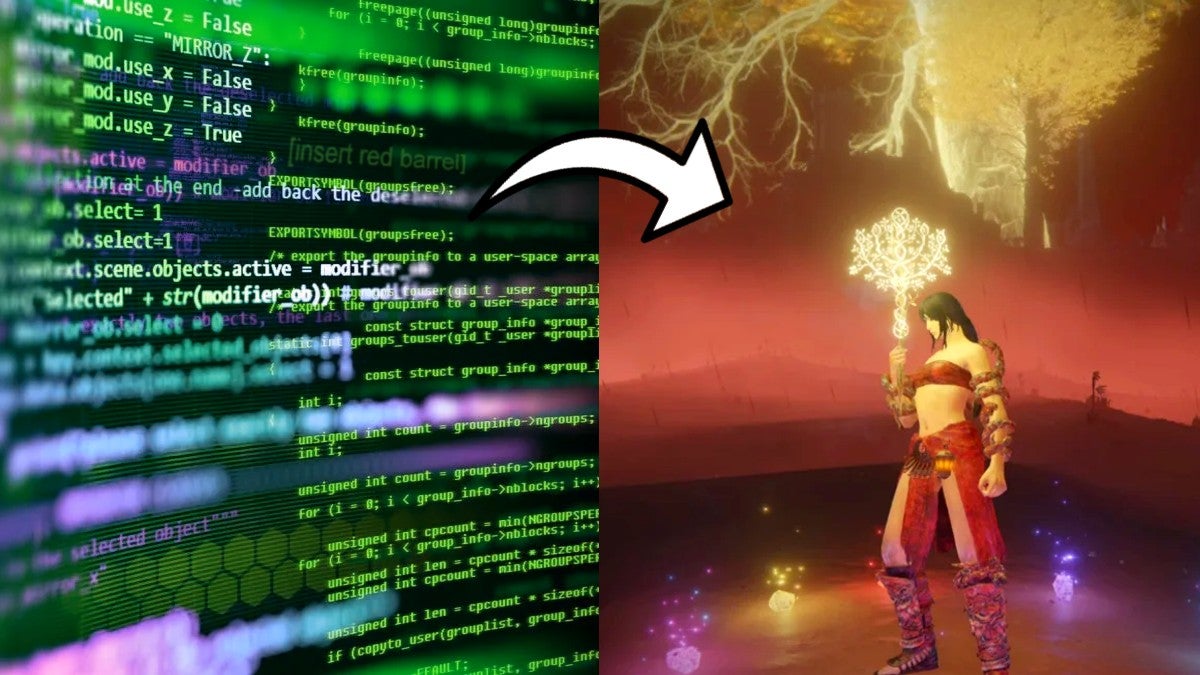![]() Key Takeaway
Key Takeaway
Video games are made by a development team with financial help from a publisher. The main parts of the game-making process are pre-production, production, and post-production. All the while, the development team needs to meet milestone goals set by the publisher.
There’s a lot that determines how video games are made. Development teams follow a specific process to make this complicated task as straightforward as possible. The three main stages are pre-production, production, and post-production—plus, milestone goals need to be met.
Table Of Contents
The Major Roles on a Development Team

Before we get into how video games are made, we should look at who makes them. For the development process to work, clear roles must be assigned. This is to make sure all important aspects are taken care of.
Publisher
A publisher is a company that provides the money needed to make a game. This role isn’t technically part of the development team, but their involvement is critical. Creating video games has become increasingly expensive, so most development teams rely on a publisher to give them the money they need to make a game.
Some publishers own studios in which they can create a game with an internal development team. Although, it’s common for publishers to hire external development teams as well. Most of the time, it is the publisher that owns the intellectual property (IP) of a game, regardless of who they get to develop it.
Publishers also give development teams goals to reach by certain points in time. This keeps the team on track in terms of progress. Such goals set by publishers are known as “milestones”.
Here are some of the things publishers do in the development process:
- Marketing and advertising
- Financial support
- Localization
- Box design
- Distribution
- Setting development goals (milestones)
Director
This role can also be called a “producer”, “team lead”, “manager”, and other similar terms. The director is the head of the development team and oversees many of the managerial tasks. You can think of this role as a director for a film, as both jobs are similar.
On smaller teams, there is often only one director, however, on larger teams there are multiple. Where a big video game needs multiple people in this role, they are often called “producers” instead of “directors”.
Here’s a list of many of the tasks directors and producers look after (though the exact tasks may vary):
- General scheduling
- Reporting progress to the publisher
- Hiring and assigning staff
- Public relations duties
- Contract negotiation
- Budget maintenance
- Quality Assurance
Designer
This role is all about creating the concepts behind a game. There is often a lead designer who comes up with the structure of a game’s world. However, there are usually multiple designers on a team who focus on different aspects.
You can think of designers as idea generators. They come up with things that other team members physically insert into the game. This involves creating a story, conceptualizing levels, developing mechanics, and more.
Here’s a breakdown of some of the different designer jobs and what they do:
- Level Designer: creates specific levels and areas
- Art Designer: makes concept art and determines the visual style
- Sound Designer: develops the audio style of a game, such as what kind of music and sound effects will be used
- Writer: makes the story, dialogue, and other written portions
- Graphic Designer: works with the publisher to create the box art and related merchandise
- Gameplay Designer: comes up with mechanics
- Character Designer: creates characters, NPCs, and enemies
Programmer
Programmers are the core of a development team. They are the ones who physically put everything into a video game. This is done through coding and the use of other digital tools. Most of the time, there are lead programmers who oversee teams of programmers under different disciplines (graphics, sound, etc.)
Almost everything about a game needs to be programmed. As such, this role needs to use different types of software and hardware to put a game together. On top of that, there are many different types of programmers. Each type of game component needs to be programmed in a different way.
Here are many of the programming disciplines and what they do:
- Physics: develops the game engine and determines how collisions and movement work
- Graphics: creates the models and textures of everything in-game
- Sound: determines the music, audio dialogue, and sound effects
- Gameplay: makes the game’s interactable features
- Artificial Intelligence: works on how NPCs and enemies act
- User Interface: develops the way players will interact with a game, such as the options menu, feedback responses, and more
- Input Processing: makes the game function with various input devices (keyboards, controllers, etc.)
- Network Communication: creates the way in which games can function for offline and online gameplay
- Scripting: creates the command system software that allows other programmers to do specific tasks
- Game Tools: develops the digital tools that scripters and other programmers use to perform general tasks
Tester
When a game gets close to being finished, it needs to be tested. Testers are the ones who check for bugs and other technical flaws in a game. They also report back to the development team so that the programmers know what they need to fix.
You need to know a lot about computing and analytics to be a good tester. If you can’t determine what is wrong, you can’t give good feedback to the development team. At the end of the day, it’s up to the testers to check whether a game is both functional and fun.
How Video Game Pre-Production Works

While a lot of the stages of pre-production can seem repetitive to some, there is a good reason for it. Companies don’t want to invest lots of money into a bad idea, so they need multiple kinds of proof that a game has promise. Most of the pre-production process involves meetings between publishers and the development team.
The Pitch
When the idea for a game is born, it needs to find the right people before it can come to life. Where the pitch comes from depends on many factors. For example, the remake of an old game can be pitched by the publisher who already holds the IP for it. This would involve the publisher finding a developer and hiring them to create the remake.
However, the reverse is more common. Developers often seek out publishers so that they can get the funding to work on their idea.
On a related note, if a publisher owns a development studio, the need for a pitch is only a formal factor. This is why some AAA game franchises can have many video games that shortly come out one after another.
The pitch itself is a short summary of what will make the game good and why it deserves to be made. Sometimes, a publisher will want a working demo for a game pitch—but this is not always the case.
Game Proposal
If a pitch is successful, the next step is the game proposal. Think of this as a gradual increase in resources before actual production begins. There is a lot of planning and a little bit of game development.
Here’s a broad list of game details publishers want at this stage:
- The game’s genre
- A description of the gameplay
- Concept art to visualize game elements
- The setting
- An outline of the story
- Who the target audience will be
- What platforms the game will be on
- An estimated schedule of production
- Analyzation of the market for the game
- Staff requirements
- Rough budget requirements
- Analyzation of potential risks
Game Design Document
After the game proposal, a document is written up to keep track of everything discussed. When all of these details are outlined, a small crew puts together a prototype of a game. This is meant to give the publisher a physical representation of what the game will be like.
Such prototypes often have very rough graphics and many placeholder elements; they’re just proof of concept. Also, they are sometimes only done on paper and don’t involve programming at all.
As the prototype is being worked on, more and more details are added about the gameplay and other elements. The actual game design document gets updated and checked frequently. This is when the production gradually scales up.
Prototyping
While the game design document is being updated, so is the prototype. Prototypes at this point allow for elements stated in the game design document to be tested. As such, the development team and publishers can see how elements will (or won’t) work.
Although this process can be tedious, it’s an important step to take before putting large amounts of resources into programming (which is expensive). If a prototype ends up getting moved into the programming stage due to being promising, elements from it can be ported into early versions of a video game.
What Video Game Production Is Like

This is where the bulk of development happens. The different roles of a team work together to create the elements of a functional product. How video games are made during this process involves each part of a team focusing on their primary tasks.
Game Design
The various designers discuss the in-world rules of a game. The majority of what’s discussed involves art direction, gameplay design, and other technical aspects. Following each meeting, information is passed down to individual sections of the team so that they can input elements into the game.
Programming
After the design discussions, programmers work on inserting the discussed elements. Updates to the visuals, audio, and gameplay are frequent. There is usually a weekly update, so the work is neverending for programmers. At the beginning of the production phase, a unique source code is often created for the game.
Level Design
Parts of the in-game world are developed in greater and greater detail. This includes the insertion of landscapes, NPCs, and much more. The level designers work hand-in-hand with artists, writers, and other team members to make sure that what’s put into the game reflects the goals and concepts of the title.
Art Direction
As updates come in, how a game looks can change. Enemies, areas, NPCs, and more can evolve over the course of time depending on whether or not these aspects represent their conceptual origins properly.
Sound Direction
Like the art direction, the sound direction often changes as a game is produced. Music, sound effects, and dialogue start being recorded and put into the game. However, some audio components get reworked or replaced as production goes on—just like how some visual elements get changed.
Testing
Although the bulk of testing is done towards the end of a game’s production, many tests are also done in early and mid-production. This is to ensure that each part of a game is as bug-free as possible. Doing this prevents problems in the future and helps to smooth out the development process.
Marketing
When a game begins to reach completion, marketing starts happening. The development team and publisher work together to figure out a release date. Afterward, the publisher begins advertising the game.
At first, come teaser trailers during pre-production. However, as the game gets closer to being finished, full trailers and playable demos also start getting released.
Localization
Once the written portions of a game are done, it starts getting translated. This has become increasingly common as video games are released all over the world. The game gets adapted from its original language to others.
Additionally, other local criteria need to be met. Censorship and cultural sensitivity are taken very seriously so that players worldwide can enjoy the game equally.
The Milestones Video Games Need to Meet During Production

Publishers give the development team a series of goals that need to be met by certain points in time. Milestones are set throughout pre-production, production, and sometimes post-production as well.
When a development team meets a milestone, it is a good sign that the game’s production is being handled well. When a development team does not meet its milestones, it can cause publishers to become concerned.
First Playable
Sometime in pre-production or early in the production phase, a playable version of the video game is developed. This is often the prototype or an early version of the full game that has taken many elements from the prototype.
The goal of a first playable demo (sometimes called a pre-alpha version of the game) is to show how a game’s most important elements will function.
Alpha
Following a successful pre-alpha version of a game, the development team works on filling in gaps. When this is done, the alpha version of a game should include all of the major elements. There’s still a long way to go in terms of completing the game, but an alpha version should be a fully playable form of the game.
Code Freeze
Once a game clears the alpha stage, new code stops being put into it. As such, the development team starts focusing on fixing existing issues instead of creating new parts of the game. A code freeze often occurs shortly before a game’s beta version is completed.
Beta
At this point, all the assets, code, and features are in the game. True beta versions of video games should appear very close to the release version. When this stage is reached, the development team doubles down on getting rid of bugs and polishing existing elements. No new components are put into the game.
Code Release
After the beta phase, the code release takes place. This is when quality assurance happens—such as the bulk of the testing. Furthermore, the game gets submitted for review to the console manufacturers who determine whether or not a game can be released on a given console.
If a game wants to be released on all major consoles, it needs to be submitted to PlayStation, Xbox, and Switch manufacturers respectively.
Gold Master
This is the master copy of a fully completed game. It’s this build that gets copied and reproduced for physical versions of a game. Similarly, the digital versions get created from the gold master copy as well for individual online platforms like Steam.
Crunch Time
If things don’t go as planned during production, the development team needs to work very hard to meet their deadline. This is because, at this point, the game is already being marketed with a specific release date.
This puts a lot of pressure on the developers as they are running out of time to complete their game. If things continue to go poorly, a game can end up in development hell.
The Realities of Video Game Post-Production

After a finished game is shipped, maintenance begins. Usually, the development team waits a while for bug reports to come in. While they did their best to get rid of most bugs, there are always a few that slip past quality assurance.
However, when the first batch of bug reports comes in, the development team starts creating patches to fix the issues. Thanks to the internet and modern technology, patches can be applied to games so that you don’t have to do anything besides download them and start up the game.
For the most part, the first patches of a game will be the biggest. As more and more bugs get squashed, the following patches will be smaller. Depending on the size and nature of a game, patches may stop coming after a few weeks or months.
Although, for MMO (massively multiplayer online) games, the patches and updates will be nearly endless. This is due to such games needing much more updates to gameplay to keep things fresh and interesting. As such, patches and maintenance work for them is much greater.


